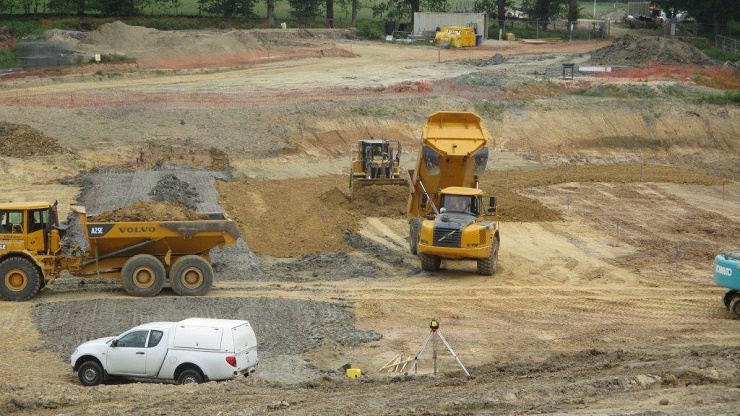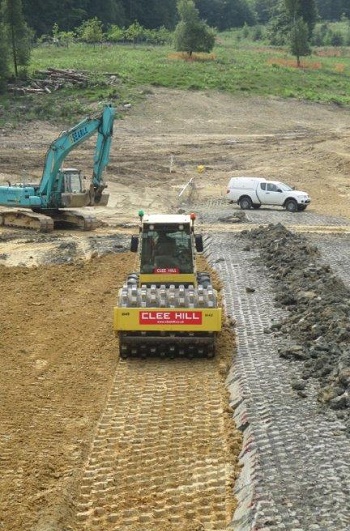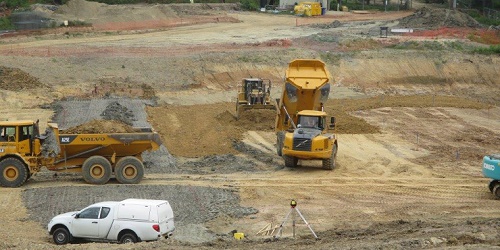
Following a seasonal break in on-site activities the latest phase of work at the Clay’s Lake Flood Prevention Scheme is now well underway.
The flood prevention works at Clay’s Lake in West Sussex are being carried out by Mackley working as part of Team Van Oord, and on behalf of the Environment Agency.
The Clay’s Lake project forms part of the Upper Mole Flood Alleviation Scheme which was developed by the Environment Agency after floods in the Crawley area during 2000.
The works comprise the removal of an existing dam which is being replaced with a larger dam. This will increase the lake’s capacity from 10,000 cubic metres to nearly 400,000 cubic metres, thereby reducing the risk of flood to more than 280 homes in the area, and to Gatwick Airport.
 Steve Brown, Mackley Project Manager for Clay’s Lake, said: “The current phase of work focuses on the main embankment, or dam.
Steve Brown, Mackley Project Manager for Clay’s Lake, said: “The current phase of work focuses on the main embankment, or dam.
“The main photo (above) shows the shoulder material – sandy clay – being tipped, spread and rolled, with the main core material – blue/grey clay – visible in the left of the picture.
“The vertical photo (right) shows the Upper Tunbridge Wells sand being compacted into the downstream shoulder of the dam.
“This will be a continuous operation until this phase of works is completed in late July/early August.”
There has been a strong recent focus on environmental issues – silt management in particular – at Clay’s Lake.
In April 2017, the Clay’s Lake site team received specialist training on silt management, one of the leading causes of pollution at construction sites.
The training was delivered by the specialist consultancy frog environmental and covered the legal requirements associated with the management of silt on construction sites.
frog environmental also assisted with the successful deployment of ‘silt wattles’ to help control sediment on the scheme.
Natural silt wattles are used as check dams in rivers, ditches, swales and gullies to reduce the speed of water and aid natural sediment deposition. The natural media supports silt trapping and can also be used in conjunction with a floc mat to enhance sediment capture and reduce downstream turbidity.
08 June 2017


